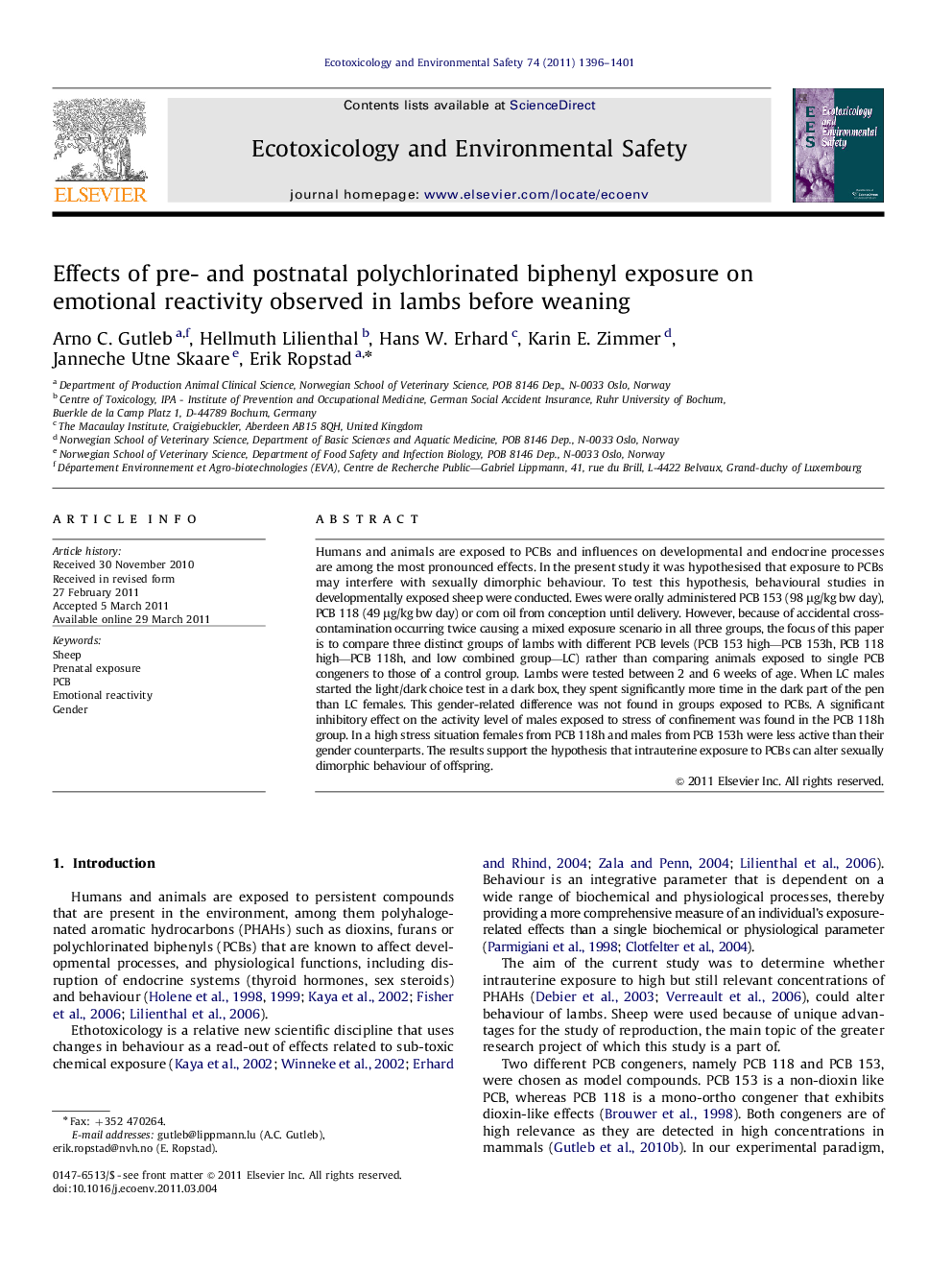| Article ID | Journal | Published Year | Pages | File Type |
|---|---|---|---|---|
| 4421222 | Ecotoxicology and Environmental Safety | 2011 | 6 Pages |
Humans and animals are exposed to PCBs and influences on developmental and endocrine processes are among the most pronounced effects. In the present study it was hypothesised that exposure to PCBs may interfere with sexually dimorphic behaviour. To test this hypothesis, behavioural studies in developmentally exposed sheep were conducted. Ewes were orally administered PCB 153 (98 μg/kg bw day), PCB 118 (49 μg/kg bw day) or corn oil from conception until delivery. However, because of accidental cross-contamination occurring twice causing a mixed exposure scenario in all three groups, the focus of this paper is to compare three distinct groups of lambs with different PCB levels (PCB 153 high—PCB 153h, PCB 118 high—PCB 118h, and low combined group—LC) rather than comparing animals exposed to single PCB congeners to those of a control group. Lambs were tested between 2 and 6 weeks of age. When LC males started the light/dark choice test in a dark box, they spent significantly more time in the dark part of the pen than LC females. This gender-related difference was not found in groups exposed to PCBs. A significant inhibitory effect on the activity level of males exposed to stress of confinement was found in the PCB 118h group. In a high stress situation females from PCB 118h and males from PCB 153h were less active than their gender counterparts. The results support the hypothesis that intrauterine exposure to PCBs can alter sexually dimorphic behaviour of offspring.
